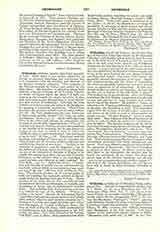

Orthosias, a titular see of Phoenicia Prima, suffragan of Tyre. The city is mentioned for the first time in I Mach., xv, 37, as a Phoenician port (D. V., Orthosias); Pliny (Hist. Nat., V, xvii) places it between Tripoli, on the south, and the River Eleutherus, on the north; Strabo (Geographia, XVI, ii, 12, 15), near the Eleutherus; Peutinger’s “Table”, agreeing with Hierocles, George of Cyprus, and others, Indicates it between Tripoli and Antaradus. Le Quien (Oriens Christ., II, 825) mentions four bishops, beginning with Phosphorus in the fifth century. Two Latin titulars of the fourteenth century appear in Eubel, “Hierarchia cath. medii aevi”, I, 396. In the “Not.
Episcop.” of Antioch for the sixth century (“Echos d’Orient”, X, 145) Orthosias is suffragan of Tyre, while in that of the tenth century (op. cit., X, 97) it is confounded with Antaradus or Tortosa. The discovery on the banks of the Eleutherus of Orthosian coins, dating from Antoninus Pius and bearing figures of Astarte, led to the identification of the site of Orthosias near the River El-Barid at a spot marked by ruins, called Bordj Hakmon el-Yehoudi.
S. VAILHÉ

